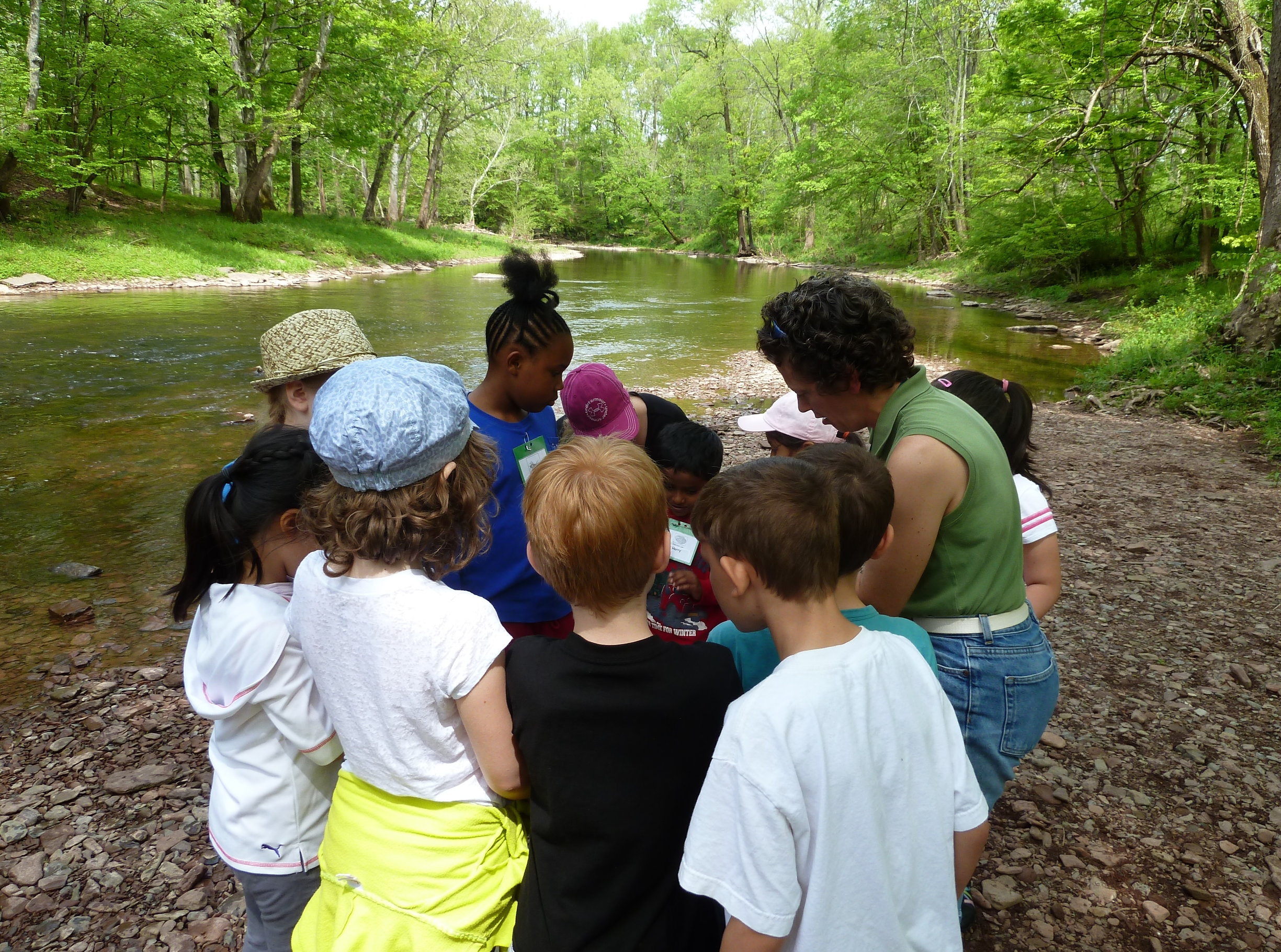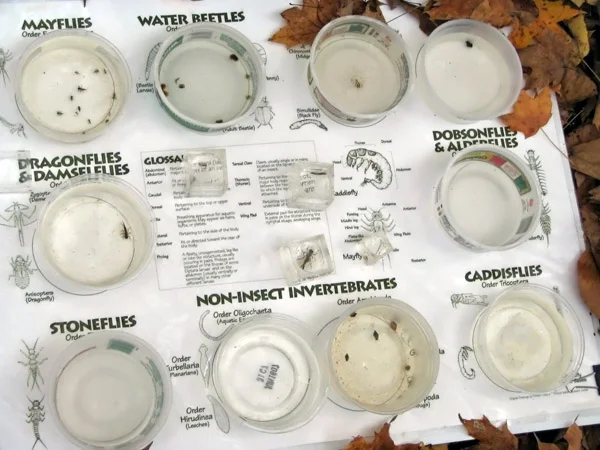Introduction to Stream Communities - Grades 2 & 3
All eyes, all the time on the members of the East Branch stream community! We'll put on our water shoes, search for animal homes, and investigate this remarkable watery environment. Following a hike through the woods, we arrive at our gravel bar destination where we will learn how to carefully move through the water locating our creek buddies as we explore their habitat. Pre-and post-trip activities are included.
Fee:
$10 per student, at the Conservancy($100 minimum fee per class)
For more information or for reservations contact: PWC Education Department at education@perkiomenwatershed.org
What the teachers are saying:
More schools should know about your programs!
-3rd Grade Teacher
Thank you so much for this valuable experience. I am not the most nature-friendly person, but I thoroughly enjoyed every minute! I have a new respect for the outdoors!
-2nd Grade Teacher
The Perkiomen Creek Awakens
By Aaron Yeiser, age 8
In the winter, the Creek is asleep under the blanket of ice. It is silent as an owl flying through the night. Spring arrives. The sun takes the blanket of ice off the Creek. The Creek gurgles as it washes over the rocks. Streams rush into the Creek as the ground melts. The Virginia Bluebells silently ring their bells, waking up the forest. Stirring creatures stretch their fins and legs and tails. The frogs and turtles unborrow themselves and go up for air. The fish start moving and enjoy the cool spring water. The insects are hatched. The Creek is swarming with Mayfly nymphys, Dragonfly nymphs, Caddisfly larvae and Water Striders. As the dawn of Spring passes to the noon of summer, kids come to study the Creek's life.
PDE Academic Standards addressed by this lesson include:
3.1.1.A1 - Categorize living and nonliving things by external characteristics.
3.1.1.A2 - Investigate the dependence of living things on the sun’s energy, water, food/nutrients, air, living space, and shelter.
3.2.1.B6 - ENERGY Recognize that light from the sun is an important source of energy for living and nonliving systems and some source of energy is needed for all organisms to stay alive and grow.
4.2.1.A - Explain the path water takes as it moves through the water cycle.
3.1.2.C2 - Explain that living things can only survive if their needs are being met.
4.1.2.A - Describe how a plant or an animal is dependent on living and nonliving things in an aquatic habitat.
4.1.2.C - Identify sources of energy in an aquatic habitat.
4.1.2.D - Identify differences in living things (color, shape, size, etc.) and describe how adaptations are important for survival.
4.2.2.C - Identify and describe the basic needs of plants and animals in an aquatic ecosystem.
4.4.2.C - Examine life cycles of plants and animals in an aquatic habitat.
4.5.2.C - Identify how people can reduce pollution.
3.1.3.A1- Describe characteristics of living things that help to identify and classify them.
3.1.3.A2 - Describe the basic needs of living things and their dependence on light, food, air, water, and shelter.
3.2.3.B6 - ENERGY Recognize that light from the sun is an important source of energy for living and nonliving systems and some source of energy is needed for all organisms to stay alive and grow.
4.1.3.A - Differentiate between the living and non-living components in an environment.
4.1.3.D - Identify organisms that are dependent on one another in a given ecosystem.
4.2.3.A - Define the term watershed. Identify the watersheds in which you reside.
4.2.3.B - Identify plants and animals found in a wetland.
4.2.3.C - Identify plants and animals that live in lakes, ponds, streams, and wetlands.
4.5.3.C - Identify different types of pollution and their sources.








